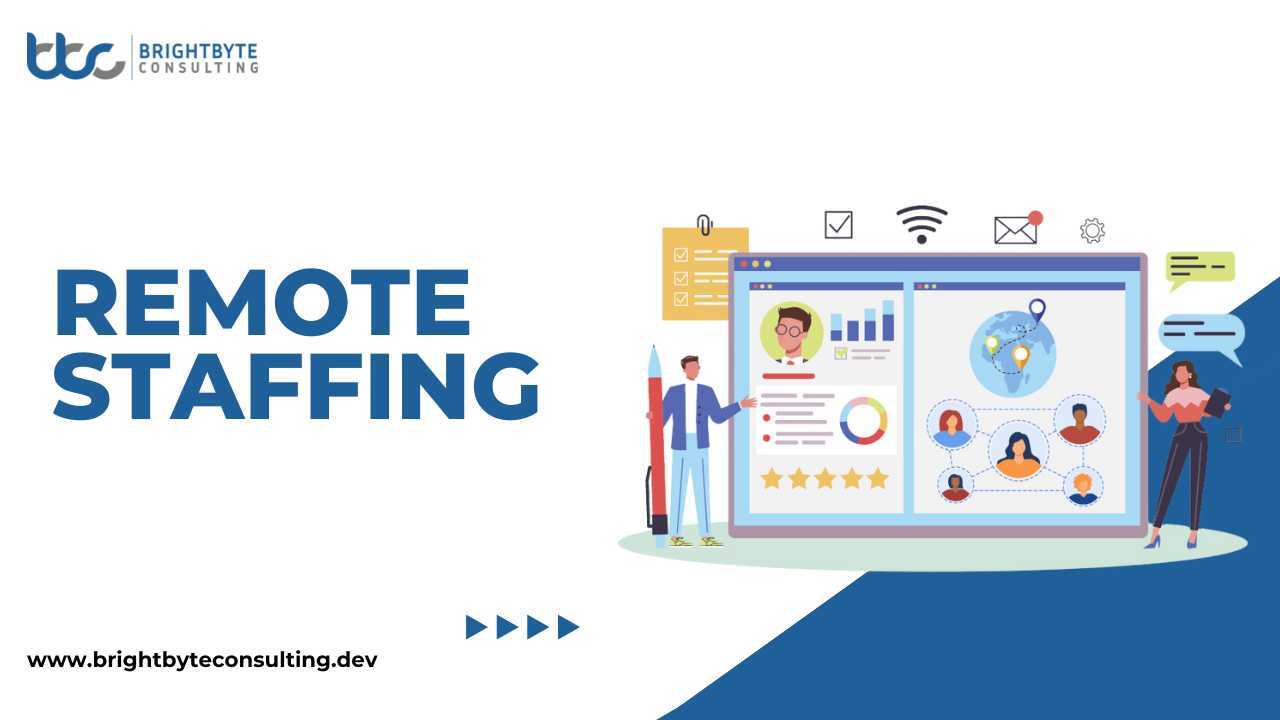In the modern business landscape, companies are continually seeking ways to optimize operations and reduce costs. Two popular strategies for achieving these goals are outsourcing and offshoring. Although often used interchangeably, they have distinct differences. In this article, we’ll delve into what outsourcing vs offshoring are, highlight their key differences, and explore the advantages each can offer to businesses.
Outsourcing
Outsourcing involves contracting specific business processes or tasks to external service providers. These providers can be located domestically or internationally, depending on the company’s needs and preferences.
Examples of Outsourcing
- IT Outsourcing: Companies often outsource their IT services, such as software development, technical support, and network management, to specialized firms.
- Customer Support: Many businesses outsource customer service operations to call centers in countries with lower labor costs.
- Human Resources: Functions like payroll, recruitment, and employee training can be outsourced to HR firms.
Benefits and Drawbacks of Outsourcing
The benefits and drawbacks of outsourcing are discussed in detail in the following table
| Outsourcing Benefits | Outsourcing Drawbacks |
| Hiring a specialist for a specific task can be much cheaper than hiring a full-time employee. | Once you outsource a task, you give up some control over how it’s done. Clear communication is key to ensuring the work meets your expectations. |
| Imagine finding the perfect graphic designer in Paris to create your website, even if your business is in Chicago! Outsourcing opens doors to a worldwide network of skilled professionals. | Don’t rush into the first offer you see! Carefully research and evaluate potential partners to ensure their experience and reputation align with your needs. |
| Free up your in-house team to focus on what they do best, whether baking delicious cupcakes or developing innovative software. | For unique ideas or processes, make sure you have proper safeguards in place to protect your intellectual property. |
| Outsourcing allows you to adjust your workforce as your business needs change. | Language and cultural differences can be tricky, especially when outsourcing overseas. Be mindful of time zones and communication styles. |
Offshoring
Offshoring refers to relocating business processes or production to another country. This is usually done to take advantage of lower labor costs, favorable economic conditions, or other strategic benefits.
Examples of Offshoring
- Manufacturing: Many companies move their manufacturing operations to countries with lower production costs, such as China or India.
- Software Development: Firms may set up development centers in countries known for their tech talent, like Ukraine or the Philippines.
- Back Office Operations: Tasks such as data entry, accounting, and administrative functions are often offshored to regions with cost advantages.
Advantages and Disadvantages of Offshoring
Advantages and disadvantages of Offshoring are given below in the table:
| Offshoring Advantages | Offshoring Disadvantages |
| Studies show labor costs can be significantly lower in countries like Vietnam or India, especially for manufacturing. | Language and cultural differences can be tricky. Managing a team overseas requires clear communication and a willingness to adapt to different work styles. |
| Offshoring production can put you closer to new customer bases and streamline logistics. | Ensuring consistent quality can be a challenge when working with teams in another country. |
| Many countries offer tax breaks or other perks to attract foreign businesses, making offshoring even more attractive. | Protecting your unique ideas or processes can be more complex when working overseas. Strong intellectual property safeguards are crucial. |
| A 2023 survey by the World Bank found that 80% of developing countries offer some form of investment incentive. | Don’t just focus on labor costs! Factor in transportation, communication tools, and potential legal fees to get a true picture of offshoring expenses. |
Difference Between Outsourcing vs Offshoring
The major difference between outsourcing and offshoring is given below in the table:
| Outsourcing | Offshoring |
| In outsourcing, contracting work to a third-party service provider. | Offshoring work is done overseas. |
| In this tasks or functions are assigned to external vendors. | Relocating jobs or operations to different countries. |
| Outsourcing focuses on core operations. | Primarily reduce labor and operating costs. |
| Mainly to focus on core operations. | Offshoring reduces labor costs. |
| Non-employees of your organization | A dedicated team of remote employees. |
Outsourcing vs Offshoring: Which is Better?
The decision between outsourcing and offshoring depends on a company’s specific needs and goals. Here are some factors to consider:
Cost Considerations
- Outsourcing: Ideal for reducing costs on non-core activities without relocating operations.
- Offshoring: Suitable for companies looking to significantly cut production or labor costs by moving operations abroad.
Strategic Goals
- Outsourcing: Helps companies focus on core competencies while leveraging external expertise.
Best Practices for Implementing Outsourcing and Offshoring
Successfully implementing outsourcing or offshoring requires careful planning and execution. Here are some best practices to consider:
Conduct Thorough Research
- Identify Needs: Clearly define which tasks or processes you want to outsource or offshore.
- Evaluate Providers: Research potential vendors or locations, considering factors such as cost, expertise, and political stability.
- Check References: Speak to other companies that have used the services of your shortlisted providers to gauge their reliability and performance.
Develop a Clear Strategy
- Set Goals: Determine what you aim to achieve through outsourcing or offshoring, such as cost savings, efficiency gains, or market expansion.
- Create a Timeline: Develop a realistic timeline for transitioning processes, including key milestones and deliverables.
- Define KPIs: Establish key performance indicators (KPIs) to measure the success of your outsourcing or offshoring efforts.
Ensure Effective Communication
- Establish Communication Channels: Set up regular meetings and updates with your outsourcing or offshoring partners.
- Cultural Sensitivity: Be aware of cultural differences and adapt your communication style accordingly.
- Use Technology: Leverage communication tools and project management software to keep all stakeholders informed and aligned.
Focus on Quality Control
- Set Standards: Clearly define quality standards and expectations from the outset.
- Monitor Performance: Regularly review the performance of your outsourcing or offshoring partners against the established KPIs.
- Provide Feedback: Offer constructive feedback and work collaboratively to address any issues that arise.
Manage Risks
- Identify Risks: Assess potential risks associated with outsourcing or offshoring, such as data security, compliance issues, and political instability.
- Mitigate Risks: Develop contingency plans to address these risks, such as diversifying your provider base or setting up backup systems.
- Insurance: Consider obtaining insurance to protect against potential losses or disruptions.
Future Trends in Outsourcing vs Offshoring
The landscape of outsourcing and offshoring is continually evolving. Here are some trends to watch for:
Increased Use of Automation and AI
As technology advances, automation and artificial intelligence (AI) are playing a more significant role in outsourcing and offshoring. These technologies can enhance efficiency, reduce costs, and improve the quality of services. For example, AI-powered chatbots are increasingly used in customer support, and automation tools are streamlining back-office processes.
Rise of Nearshoring
Nearshoring relocating business processes to nearby countries is gaining popularity as companies seek to balance cost savings with the benefits of proximity. Nearshoring can offer advantages such as similar time zones, cultural affinity, and easier travel for management oversight. For example, U.S. companies often nearshore to Mexico or Canada.
Focus on Data Security and Compliance
With increasing concerns about data security and regulatory compliance, companies are placing more emphasis on these factors when choosing outsourcing or offshoring partners. Ensuring that providers comply with relevant laws and industry standards is critical to mitigating risks and protecting sensitive information.
Sustainable and Ethical Outsourcing
Sustainability and ethical considerations are becoming more important in business decisions. Companies are increasingly looking for outsourcing and offshoring partners that adhere to environmentally friendly practices and uphold fair labor standards. This trend reflects a growing recognition of corporate social responsibility and the long-term benefits of sustainable practices.
Why BBC?
Bright Byte Consulting can guide businesses through the complexities of outsourcing VS offshoring, offering tailored solutions that align with specific needs and goals. Our expertise helps in identifying the right tasks to delegate, choosing reliable partners, and ensuring smooth transitions, whether it’s outsourcing a function to a local specialist or offshoring an operation to a cost-effective overseas location. With Bright Byte Consulting, companies can maximize efficiency, reduce costs, and focus on their core competencies, all while mitigating risks and maintaining high-quality standards.
Conclusion
In conclusion, outsourcing and offshoring offer valuable strategies for businesses aiming to optimize operations and reduce costs. Outsourcing services provide access to specialized skills and allow companies to focus on core activities, while offshoring can significantly lower labor costs and open up new markets. The choice between outsourcing and offshoring depends on your business’s specific needs, goals, and capacity for managing remote operations. Whether you need IT outsourcing, business process outsourcing, or offshoring services, careful planning and execution are crucial. Bright Byte Consulting can help navigate these choices, ensuring you maximize efficiency and achieve your business objectives.
FAQs
What is the difference between outsourcing and offshoring?
Outsourcing involves hiring external service providers for specific tasks, while offshoring involves relocating business operations to another country.
What are the benefits of outsourcing?
Outsourcing offers cost savings, access to specialized skills, and allows your in-house team to focus on core activities.
What are the common types of services outsourced?
Commonly outsourced services include IT support, customer service, accounting, and marketing.
Why do companies choose offshoring?
Companies offshore to reduce labor costs, access a larger talent pool, and benefit from favorable economic conditions in other countries.
How can Bright Byte Consulting help with outsourcing and offshoring?
Bright Byte Consulting helps identify the right tasks to delegate, choose reliable partners, and ensure smooth transitions, maximizing efficiency and cost savings.











